If you look at a table of Thai people eating in Thailand, you’d always see little bowls of sauces scattered around the table. These are what we call nam jim, which means “dipping sauce” or “condiments,” and Thai people LOVE our nam jim! They play a crucial role in balancing AND enhancing our dishes, and once you learn them, you can use them to elevate foods from any cuisine, Thai or not!
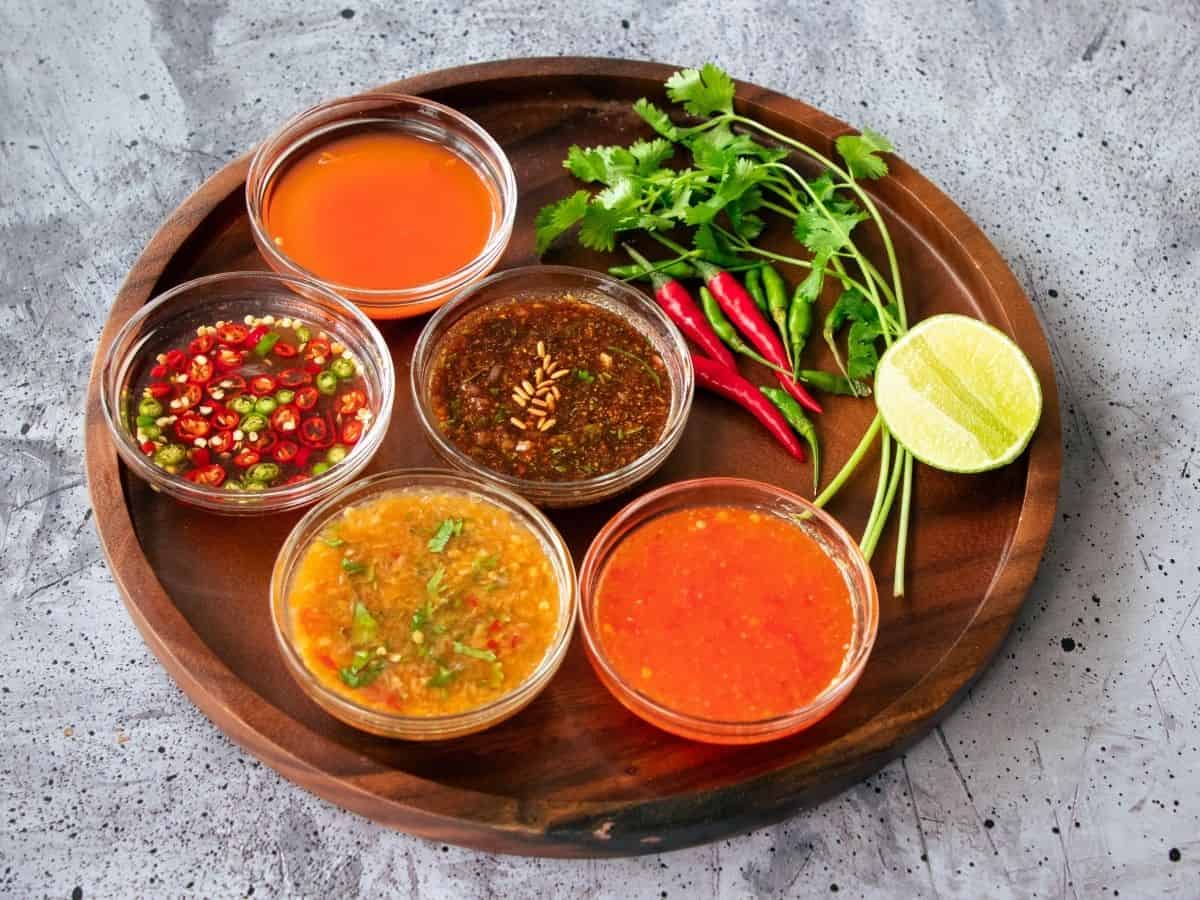
There are many kinds of nam jim, and in this post I will discuss the 5 most common ones including how to make and use them. Plus, a little rant about what is commonly thought of as a Thai sauce but is actually NOT (spoiler: it's peanut sauce). Remember: you can put these sauces on anything, not just Thai food!
Jump to:
- What Thai nam jim is, and what it is not.
- VIDEO: 5 Sauces Thai People Can't Live Without
- 1. Nam Jim Seafood - Seafood Dipping Sauce
- 2. Nam Jim Gai - Thai Sweet Chili Sauce
- 3. Nam Jim Jeaw - Dipping Sauce for Meat
- 4. Thai Chili Vinegar - Prik Nam Som
- 5. Chilies and Fish Sauce - Prik Nam Pla
- The "Thai" Sauce that's NOT Actually Thai
- "Nam Jim Sauce" is Also Not a Thing
What Thai nam jim is, and what it is not.
Nam jim literally means dipping sauce, nam refers to a liquid and jim means to dip, but more accurately it’s a condiment because you don’t necessarily have to dip things into them; you can also drizzle!
I define nam jim as sauces served on the side of a dish that are meant to complement, balance, and enhance the flavour of the main dish.
But to be clear, nam jim is NOT a dip. A dip is the star of the show, a dish unto itself, like hummus. In Thai cuisine a dip is called nam prik, such as this spicy shrimp dip, or tomato coconut dip. On the other hand, nam jim plays a supporting role to the main item and is technically optional. Although if you ask Thai people, many of us will insist it is necessary in some situations!
Let’s now go through the 5 most important Thai dipping sauces.
VIDEO: 5 Sauces Thai People Can't Live Without
If you prefer to watch rather than read, this video includes all of the information I cover in this article, plus a demo of how each sauce is made. You can also watch the video on YouTube!
1. Nam Jim Seafood - Seafood Dipping Sauce

Nam jim seafood means exactly what you think it means, a dipping sauce for seafood! And yes, Thai people uses the English word "seafood" as part of our everyday language, because the Thai term ahaan talay is more cumbersome. If you’re having any kind of seafood in Thailand, you will be given nam jim seafood 100% of the time.
Ingredients: Nam jim seafood is made from garlic, Thai chilies, cilantro roots or stems, palm sugar, fish sauce and plenty of fresh lime juice.
The flavour: While the sauce contains all 4 elements - sweet, salty, sour and spicy - it should lead with tartness from the lime juice. In the same way that squeezing a lemon over seafood is always a good idea, you want the lime juice to do the heavy lifting here. Heat-wise, it is typically medium-spicy, but this can be adjusted to taste.
How to Use: Most commonly it's used on simply cooked seafood that hasn't been heavily seasoned, whether it's steamed crab, grilled shrimp, or fried fish. The quickest meal can be made simply by drizzling some nam jim seafoood on a filet of fish. But it can also works well on a more complexly prepared dish that isn't sour in itself, such as my ginger shrimp and glass noodles. If you're a fan of raw seafood, you must try it with nam jim seafood. It's magical on raw oyster and on raw salmon, such as in my favourite salmon sashimi salad.
It also works on NOT-seafood, especially fatty meats such as crispy pork belly because the acidity of the lime juice helps cut the grease. Also, it’s great drizzled on a taco!
2. Nam Jim Gai - Thai Sweet Chili Sauce
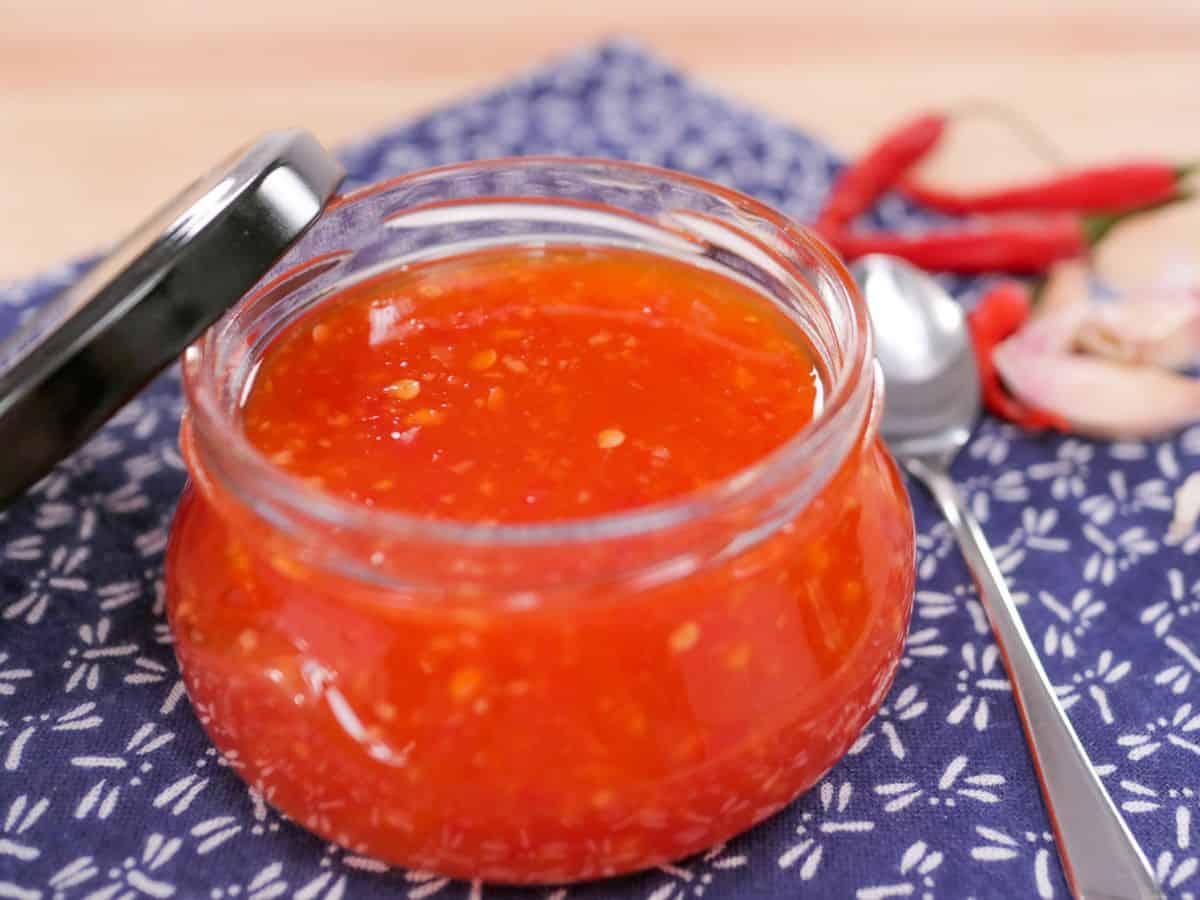
This is the most famous nam jim of all - nam jim gai which literally means “chicken dipping sauce,” but of course, it’s not just for chicken. The reason we call it “chicken dipping sauce” is because it is most commonly used for fried chicken. And I say it's the most famous because this is the “sweet chili sauce” you see in bottles on grocery store shelves everywhere.
Ingredients: Sweet chili sauce is made simply with mild chilies, spicy chilies, garlic, sugar, white vinegar and water. Everything is blended and cooked together, and then slightly thickened with some type of starch, such as tapioca starch.
Even though you can buy sweet chili sauce easily, my homemade sweet chili sauce recipe tastes SO much better and it's super easy - it also lasts forever in the fridge!
The flavour: As the name suggests, it is mainly a sweet sauce, with a subtle acidity from vinegar. Though the word "chili" is in the name, it is usually mildly spiced.
How to use: It works beautifully with anything crunchy and salty, such deep fried or air fried foods, like fried chicken, crispy spring rolls, crispy meatballs, or fried tofu. The sweetness and acidity of the sauce balances the saltiness well.
Of course you don’t have to use it on fried foods, some people also use it for grilled chicken, and you can even use it to make a sweet stir fry!
3. Nam Jim Jeaw - Dipping Sauce for Meat
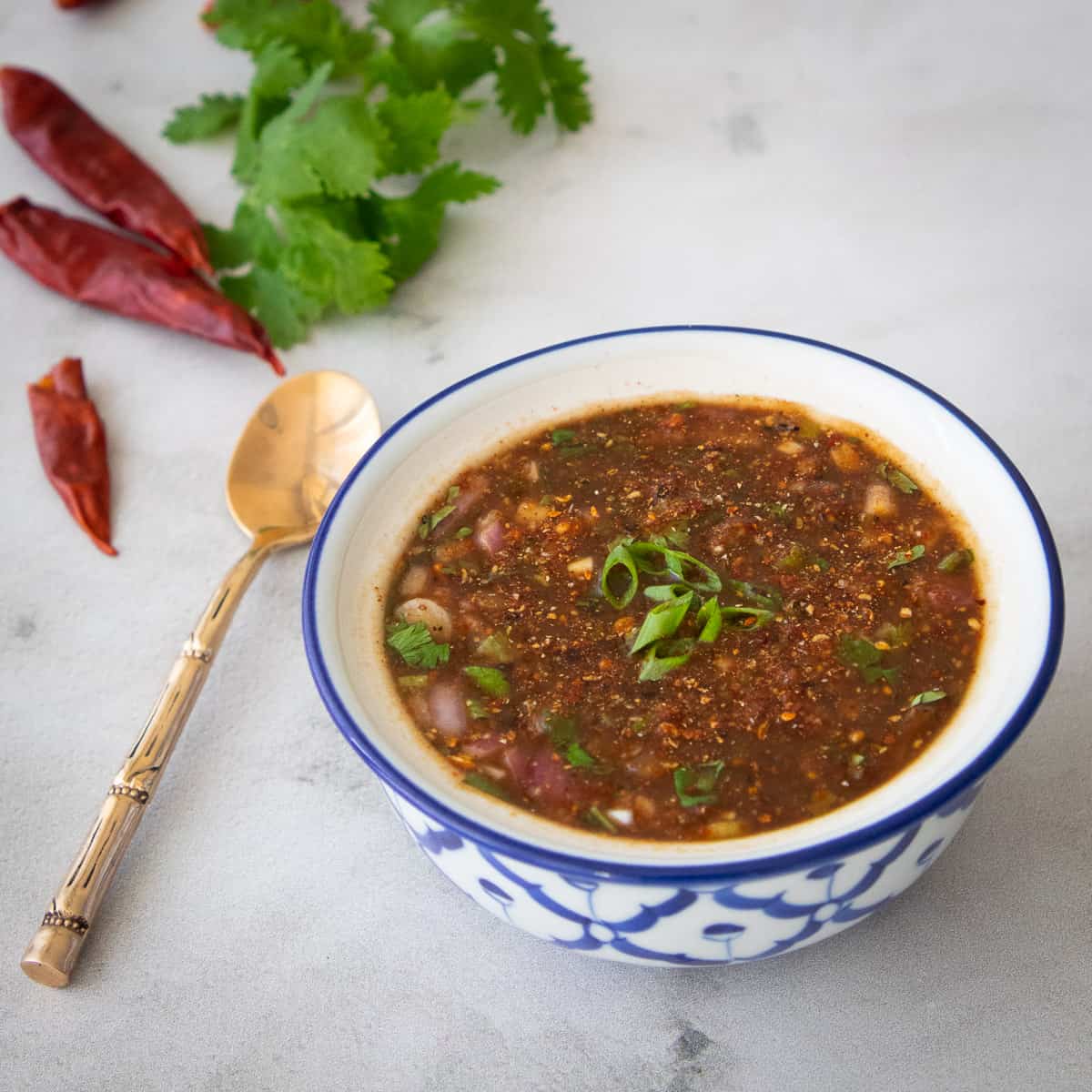
Nam jim jeaw is a must have for the summer because it is our go-to sauce for all manners of grilled meats and fish. Though it also works well with meats that were roasted, baked or fried. It originated in the Northeast of Thailand (aka Isaan region), but it is now popular all over the country.
Ingredients: Nam jim jeaw is made from fish sauce, lime juice, tamarind paste, palm sugar, chili flakes, and most importantly toasted rice powder. It is then finished with fresh herbs such as shallots, cilantro, sawtooth coriander, and/or green onions.
The flavour: Similar to nam jim seafood, it is at once salty, sour, sweet and spicy, BUT it’s richer, more umami, a little sweeter, and with pronounced nuttiness from the toasted rice powder.
How to use: Even though the classic use for nam jim jeaw is grilled meats, think of it as a sauce for any big hunks of meat, cooked in any way. Try it on steaks instead of the usual gravy, or try it with roast chicken, roast turkey, roast beef...any roast for the holidays! I even love it with a side of roasted salmon.
4. Thai Chili Vinegar - Prik Nam Som
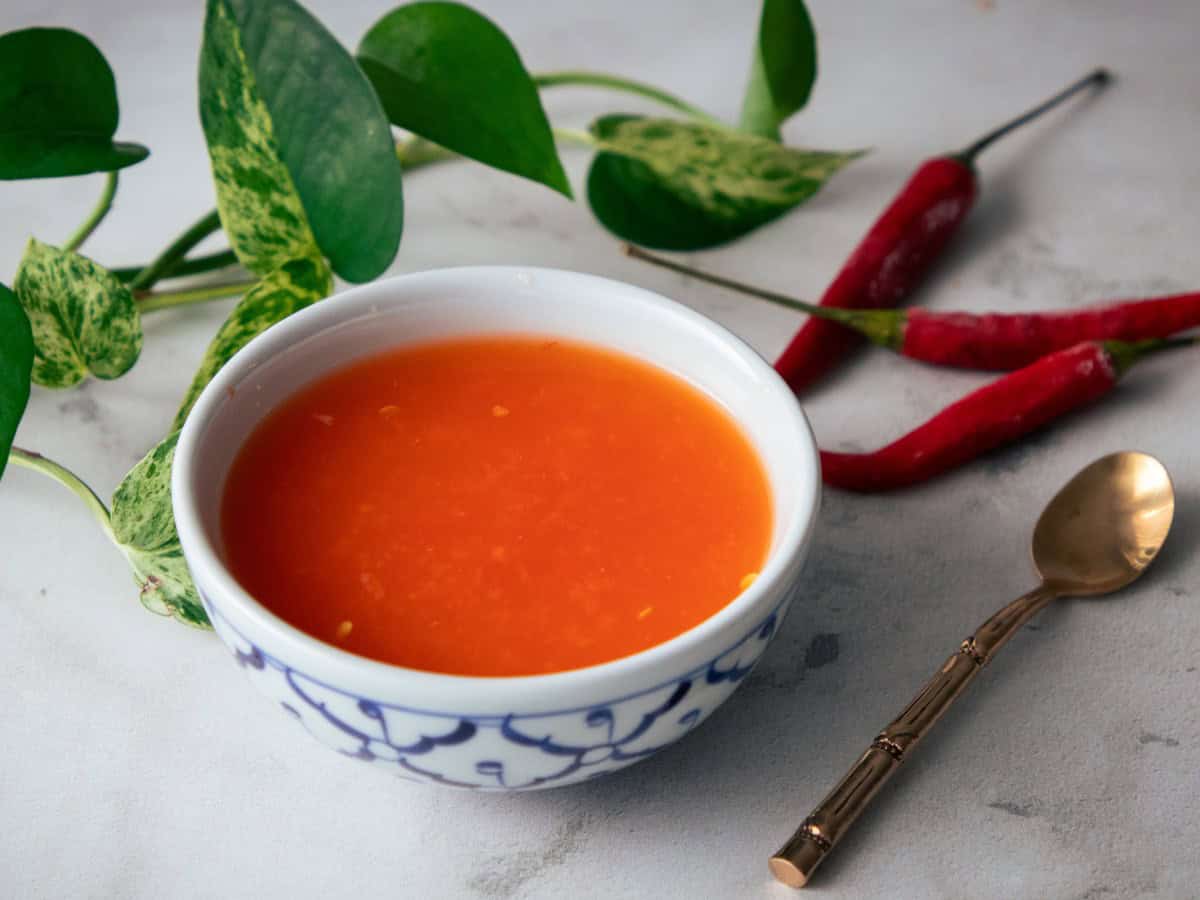
Prik means chilies, and nam som means vinegar, and at the basic level that’s all it is - chilies and vinegar mixed together! It can be both a dish-specific condiment like the previous 3 sauces, or it can be an all-purpose condiment you can put on whatever you think needs a little vinegary zing.
Ingredients: The basic version is made simply by blending or pounding some chilies into a paste, and then adding some vinegar to it. But you can also add garlic and/or char the chilies for additional complexity. A non-blended version also exists where slices of chilies are simply soaked in the vinegar.
The flavour: It tastes like a very simple vinegary hot sauce! You can make it as spicy as you'd like, but in Thailand, it tends to be mild to medium spicy so you can add a generous amount without the dish becoming too spicy.
How to use it: While you can use it wherever you might want a dash of vinegary spiciness, in Thailand, some dishes always come with prik nam som on the side. Most of the time these are noodle dishes which don’t already have acidity or spiciness in itself, such as noodle soups, pad see ew, rad na, and any kind of meat stews such as stewed pork on rice. Again it is all about balance, these dishes are primarily salty and sweet, so the spicy acidity is there to balance and brighten.
5. Chilies and Fish Sauce - Prik Nam Pla
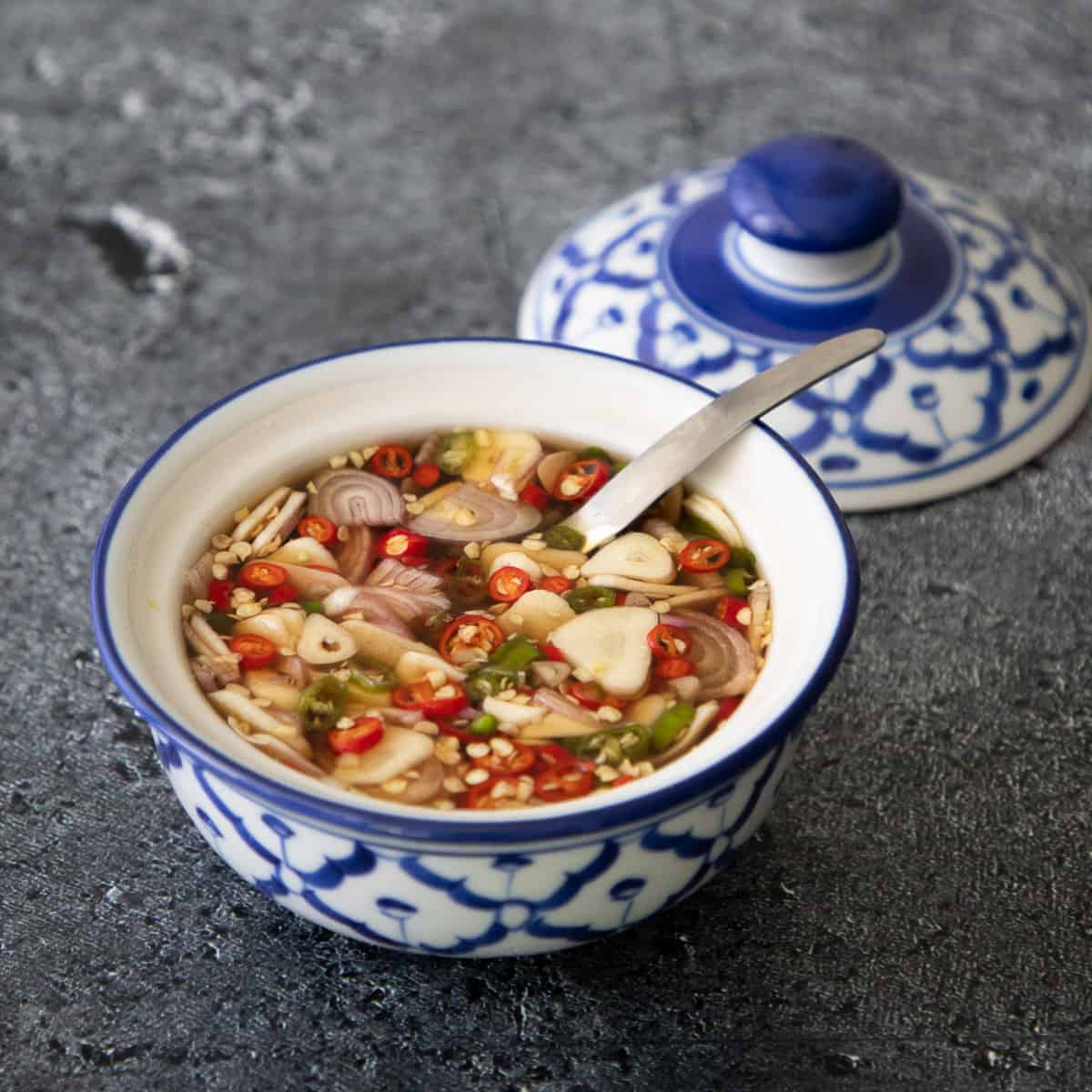
We have to end with none other than the QUEEN of Thai condiment, the most commonly used sauce, the ultimate flavour booster: prik nam pla. Prik means chilies, and nam pla means fish sauce. Unlike the previous 4 sauces, prik nam pla isn't associated with a specific kind of food, but rather used as an all-purpose condiment whose purpose is to fix anything that feels a little underseasoned. Prik Nam Pla: The Thai Sauce to Improve Anything
*Technically prik nam pla would not be considered a nam jim because of the all-purpose nature of it, but I wanted to include it in this discussion because of how commonly used it is and how important it is in Thai cuisine.
Ingredients: All you need is some chopped chilies, combine it with fish sauce, and a little lime juice. And as always you can jazz it up, with garlic and shallots or even a touch of sugar.
The flavour: Prik nam pla is salty, umami, and a little acidic. Though it looks like a lot of chilies in the bowl, if you don't eat the pieces of chilies, the liquid is typically quite mild.
How to use: Think of it as salt and pepper in Western cuisine - add it if something feels a little bland. Most of the time when a dish feels dull and under seasoned, it is because it lacks salt, acidity, and/or umami, the 3 elements prik nam pla offers, which is why it works so well!
I personally use it most often on fried rice, stir fried noodles and anything that comes with a fried egg on top. My marble eggs recipe is the best dish to experience prik nam pla. Many people also just drizzle it on their rice as a catch all flavour booster since thai people have rice with everything.
Pro tip: Ask for Prik Nam Pla at a Restaurant!
When you’re eating in a thai restaurant, you can always ask for prik nam pla, just like you could ask for salt and pepper in other restaurants. And even if they don’t have some ready to go…if you ask nicely they might just whip it up for you because it’s so simple.
And don’t worry, the chef will NOT be offended you asked for prik nam pla, Thai eating culture is very open to diners seasoning their food at the table, if anything they’d be impressed you know what it is!
Save this recipe!
The "Thai" Sauce that's NOT Actually Thai
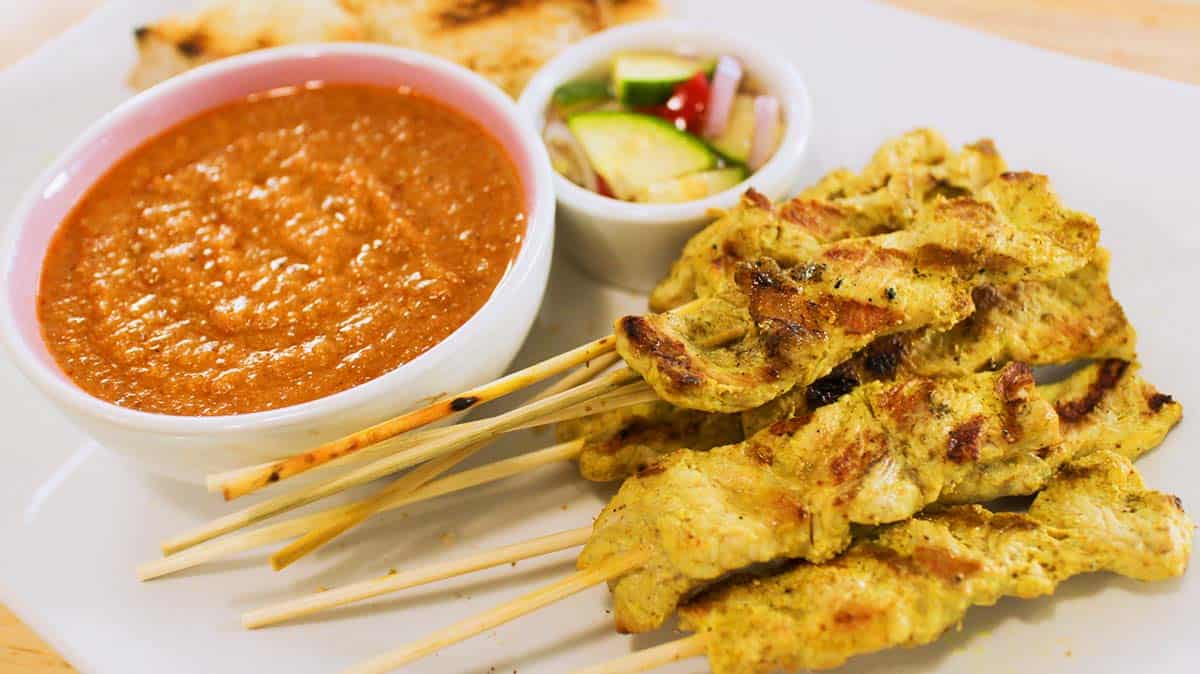
Now that you know what the real Thai sauces are, please allow me a little rant, because I need to free us from the tyranny of the “Thai peanut sauce” that plagues the Western world.
When you come across an online recipe for a "Thai peanut sauce" that contains peanut butter, soy sauce, and rice vinegar (likely not written by a Thai) please know that THAT is not a thing in Thailand. Peanut butter and rice vinegar are NOT Thai ingredients! The same goes for any bottled "Thai peanut sauce" on store shelves.
Yes, the sauce might be tasty, and yes, you may have even seen this creamy peanut sauce served in Thai restaurants in America alongside salad rolls, but neither salad rolls nor the peanut sauce is Thai food! They are Vietnamese. My guess is that American Thai restaurants started serving them due to their popularity, and overtime it became an item many people expect Thai restaurants to have.
The only sauce you can call a “peanut sauce” that we have in Thailand, the REAL Thai peanut sauce if you will, is pork satay sauce as per the picture above. Thai satay sauce contains ground peanuts, not peanut butter, and is flavoured with curry paste, not soy sauce or rice vinegar. We call this sauce “nam jim moo sate” which means “dipping sauce for pork satay.” It is only used for satay, and it is NOT a condiment that we use on a bunch of things like all the sauces discussed in this post.
"Nam Jim Sauce" is Also Not a Thing
I have also seen many online recipes for "nam jim sauce" or "nam jim dressing," which, if you've read this far, you now know that it is nonsense. Nam jim is the generic term for dipping sauce or condiment, and not a specific kind of sauce. So "nam jim sauce "just means “dipping sauce sauce”!

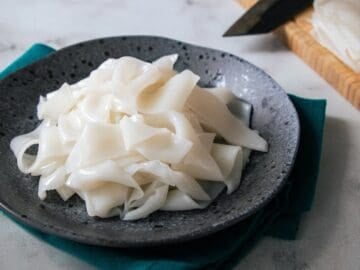
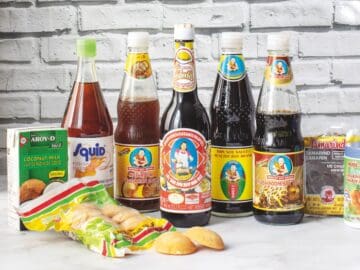
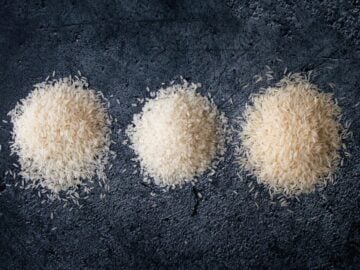


Robin says
So glad to have your collection of authentic Thai sauces! I had heard that peanut sauce is not used in all those dishes showing up on menus here as being Thai. But I thought it actually was used on Thai satays and that is how it first got introduced in US or is that a myth and that too is not authentic? I thought since people here are in love with peanut butter they took it and just ran with it.
Pailin Chongchitnant says
I talked about satay in the post 🙂
Ed says
Fantastic! That's a fine selection of sauces. And I love the Rant 🙂
Thanks very much!
Angel says
Hi there! My Tamarind paste says cook before eating. I wish to make Nam Jim Jeaw, is there some way I can heat it first before using it in Nam Jim Jeaw, or would it be okay?
Pailin Chongchitnant says
Interesting...they're probably being extra safe. What I would do it pour everything out and heat it in a pot until it's boiling, you have to stir it constantly otherwise it'll bubble and splatter. Transfer it to a glass jar and then keep in the fridge.
Angel says
Thank you very much for your reply, I will try this out.